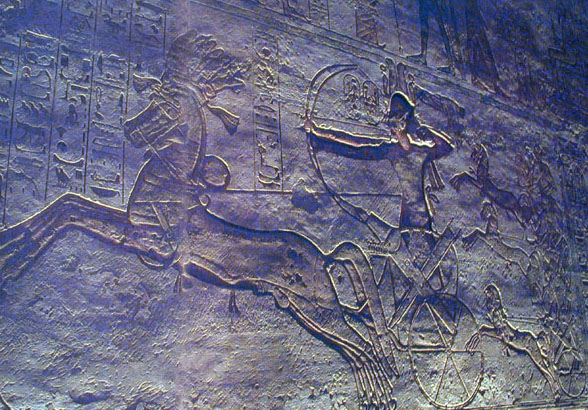Image Details

Ange Ortega
Riding tall in his chariot, the Egyptian pharaoh Ramesses II plunges into battle in this monumental relief from the Great Temple at Abu Simbel. The relief depicts one of antiquity’s most famous battles—a military confrontation between Egypt and the Hittites that took place in 1275 B.C.E. near the city of Kadesh, in Syria (see the first sidebar to this article).
Using pictorial and literary evidence from this and other reliefs, author Michael Homan describes the remarkable similarities between the Israelite Tabernacle, which served as Yahweh’s dwelling place prior to the construction of Solomon’s Temple, and Ramesses’ military camp at Kadesh. Not only do the dimensions and configuration of the Tabernacle conform to the layout of the Egyptian camp, but it is also likely that Yahweh’s portable tent originally had a military function similar to that of Ramesses’ camp. Literary texts in ancient Egypt and Israel use similar language to describe, respectively, the pharaoh and Yahweh as divine warriors. Like the pharaoh’s war tent, the Tabernacle may have been regarded as a mobile military headquarters from which Yahweh, traveling before the advancing Israelite tribes, led his people.
